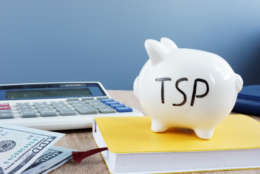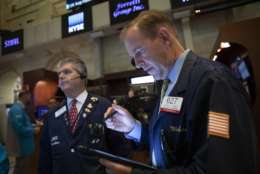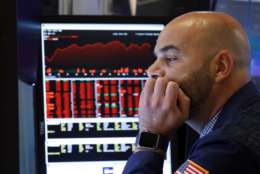investing
-
In today's Federal Newscast, acquisition authorities have made a proposed rule final, to keep phony parts out of systems the government buys.
November 25, 2019 -
This is the longest bull market in history. But eventually it will change, the market will tank.
November 06, 2019 -
Most of the 5.8 million workers, retirees and former feds with Thrift Savings Plan accounts have some of their retirement nest eggs in the G fund.
October 29, 2019 -
Most experts would say it depends on your age, when you plan to retire, and, very important, your risk tolerance.
October 21, 2019 -
Fans of the Thrift Savings Plan hope new withdrawal rules encourage more people to stick with it when they move to another job or retire.
October 17, 2019 -
A growing number of Thrift Savings Plan investors are nervously wondering how much longer the current bull market will last, and can last.
October 16, 2019 -
Last month the Thrift Savings Plan implemented a series of changes in withdrawal rules it hopes/expects will lead to more people leaving their investments in the TSP when they leave government.
October 12, 2019 -
There were 5.6 million accounts in the TSP at the end of September. A few were just born in the right family but the majority are self-made.
October 10, 2019 -
So how’s the retirement nest egg you’re building one paycheck at a time going?
October 03, 2019 -
Most of the 34,000 active and retired feds with million-dollar-plus Thrift Savings Plan accounts got there by keeping cool. Most have been steady investors for decades.
September 27, 2019 -
The first TSP millionaires were all alike and today, they still have a lot in common. The vast majority have been investing the maximum for 29-plus years.
September 16, 2019 -
The Federal Retirement Thrift Investment Board announced in 2017 it would broaden the I fund’s benchmark to include more emerging markets, including China.
September 13, 2019 -
The dominant Federal Employees Retirement System covers most working feds. It’s good but it has several moving parts.
September 04, 2019 -
Most experts say it is essential that people under the Federal Employees Retirement System put at least 5% into the Thrift Savings Plan.
August 28, 2019 -
Thanks to the ups and downs in the global markets, some of the 37,612 feds who were Thrift Savings Plan millionaires at the end of June may be back to six-figure balances.
August 27, 2019















